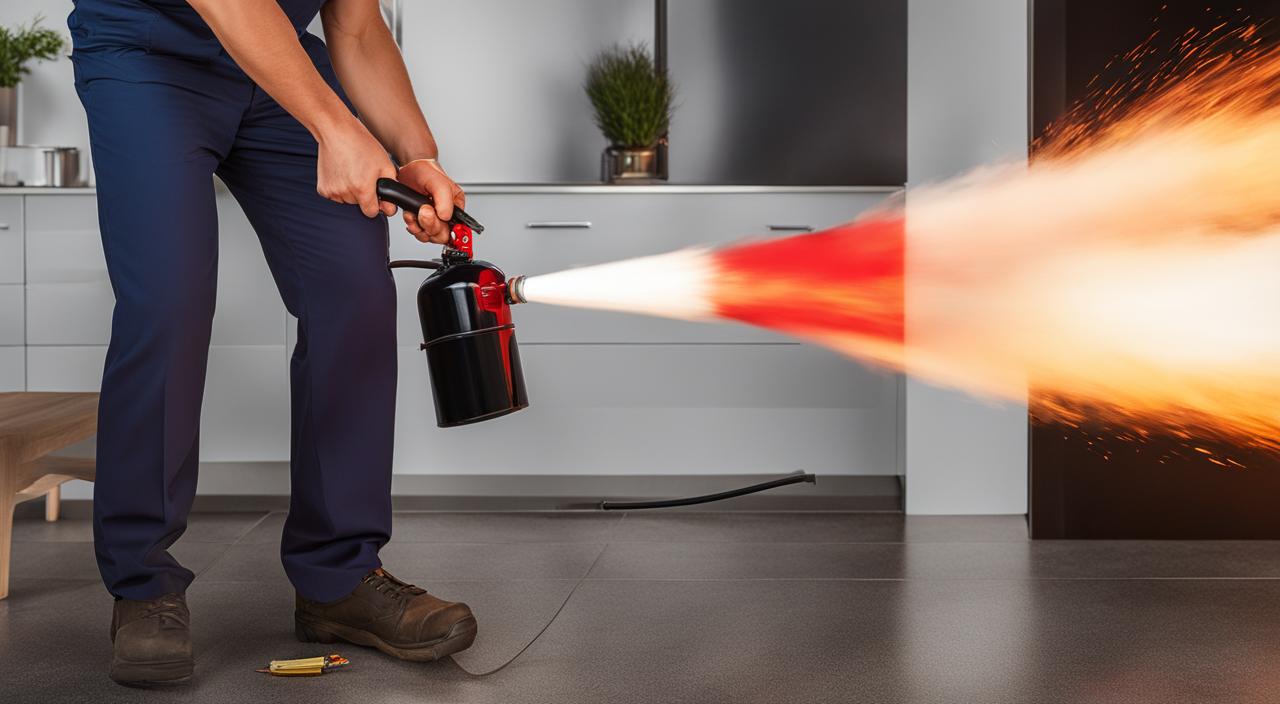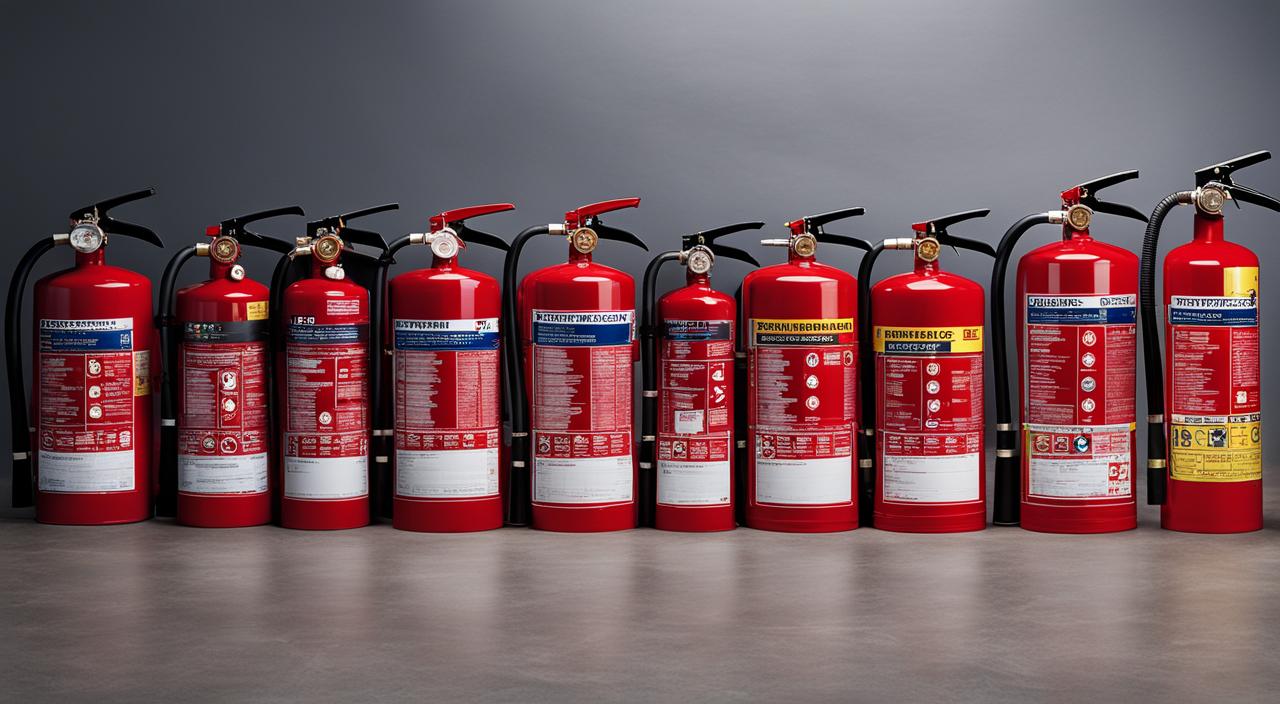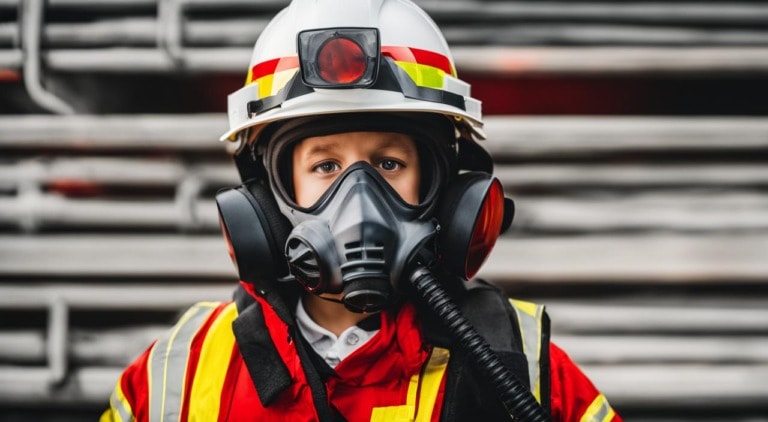
According to the National Fire Protection Association (NFPA), an estimated 1.35 million fires were reported across the country in 2021, highlighting the importance of knowing how to use a fire extinguisher. The PASS technique is a four-step process that can be followed to effectively use a fire extinguisher:
Fire extinguishers are essential tools in fire safety, but knowing how to use them correctly is crucial. The PASS technique provides a simple framework for effectively extinguishing fires. Let’s take a closer look at each step:
- Pull the pin: Start by pulling the pin located on the extinguisher’s handle. This step is necessary to release the locking mechanism.
- Aim at the base: Direct the nozzle or hose at the base of the fire. Aim for the source of the flames rather than the top of the fire. This will help smother the fire more effectively.
- Squeeze the handle: Squeeze the handle to release the extinguishing agent. Maintain a firm grip and control the discharge to avoid wasting the extinguishing agent.
- Sweep from side to side: Using a sweeping motion, move the extinguisher from side to side. This helps cover the entire base of the fire and prevents re-ignition.
By following these four steps, you can effectively use a fire extinguisher to suppress small fires and prevent them from spreading. It’s important to remember that fire extinguishers are intended for use on small fires only, and it’s crucial to evacuate and call emergency services if the fire becomes uncontrollable.
Other Fire Extinguisher Tips
In addition to knowing the PASS technique, there are other essential tips to keep in mind when using a fire extinguisher. These tips will help you maximize the effectiveness of your extinguisher and ensure your safety in the event of a fire.
1. Familiarize Yourself with Different Fire Extinguisher Types
Not all fires are the same, and using the wrong type of extinguisher can be ineffective or even dangerous. It’s crucial to understand the different types of fire extinguishers and their intended uses. Common types include:
- Class A: Suitable for fires involving ordinary combustible materials such as wood or paper.
- Class B: Designed to extinguish flammable liquid fires like gasoline or oil.
- Class C: Specifically for fires involving electrical equipment or appliances.
- Class D: Meant for extinguishing fires caused by combustible metals like magnesium or titanium.
- Class K: Used for kitchen fires resulting from cooking oils and fats.
Knowing which type of extinguisher to use for a specific fire is essential for effective firefighting.
2. Practice Proper Extinguisher Usage
When using a fire extinguisher, remember the following:
- Pull the pin: Before aiming the extinguisher, pull the pin located on the handle. This will break the tamper seal and allow you to discharge the extinguisher.
- Aim low: Point the extinguisher nozzle or hose at the base of the fire, not the flames. This targets the source of the fire and helps smother it effectively.
- Squeeze the handle: Firmly squeeze the handle or lever to release the extinguishing agent. Maintain a steady grip while operating the extinguisher.
- Sweep side to side: Use a sweeping motion while discharging the extinguisher’s contents. This will help cover a wider area and ensure the fire is completely extinguished.
3. Follow Fire Safety Precautions
Prevention is key when it comes to fire safety. Here are some precautions to follow:
- Keep fire extinguishers easily accessible in designated areas, ensuring they are not blocked by objects or obstructions.
- Regularly inspect and maintain fire extinguishers to ensure they are in proper working condition. Check the pressure gauges and inspect for any damage or signs of leakage.
- Store fire extinguishers in cool, dry areas away from potential heat sources or direct sunlight.
- Remember to follow your local fire safety regulations and guidelines.
By familiarizing yourself with different fire extinguisher types, practicing proper usage techniques, and adhering to fire safety precautions, you can effectively protect yourself and others in the event of a fire emergency.

Additional Fire Extinguisher Safety Precautions
Proper maintenance of fire extinguishers is crucial to ensure their effectiveness in case of a fire emergency. Regular inspections and maintenance routines help identify any potential issues and ensure that the extinguishers are in optimal working condition.
Fire Extinguisher Maintenance Tips:
- Inspect the extinguisher regularly for any signs of damage, such as dents, corrosion, or leakage. If any defects are found, the extinguisher should be replaced or repaired immediately.
- Check the pressure gauge periodically to ensure that it is within the recommended range. Low pressure may indicate a leak or loss of propellant, while high pressure may result in the rupturing of the extinguisher.
- Verify that the safety pin and tamper seal are intact. If either is broken or missing, the extinguisher may have been tampered with, and it should be inspected by a professional.
- Ensure that the nozzle or hose is clear of any obstructions or debris that may hinder the extinguisher’s discharge.
Fire Extinguisher Storage Guidelines:
- Store fire extinguishers in easily accessible locations, preferably mounted on brackets or placed in designated fire extinguisher cabinets.
- Avoid storing extinguishers near heat sources, direct sunlight, or areas with extreme temperatures, as these conditions can affect their performance and reduce their shelf life.
- Keep the extinguishers away from areas prone to vibrations or excessive shaking, as this may cause the contents to settle and affect their functionality.
Annual Inspections:
In addition to regular maintenance, it is essential to schedule annual inspections conducted by qualified professionals. These inspections involve a thorough examination of all extinguishers in your premises to ensure compliance with safety regulations and to identify any hidden issues that may impact their effectiveness.
By following these additional fire extinguisher safety precautions, you can enhance the reliability of your extinguishers and contribute to a safer environment for yourself and others.
Importance of Fire Extinguisher Training
Fire extinguisher training plays a crucial role in promoting proper fire safety education and preparedness. By equipping individuals with the knowledge and skills necessary to respond effectively during a fire emergency, this training can significantly reduce the potential damages and save lives.
During fire extinguisher training sessions, participants learn about different fire extinguisher types and their appropriate usage techniques. Understanding the distinct characteristics and functionalities of each type enables individuals to select and employ the most suitable extinguisher for a particular fire scenario. This knowledge empowers them to act swiftly and efficiently, maximizing their chances of successfully extinguishing the fire.
Moreover, fire extinguisher training sessions adhere to the Occupational Safety and Health Administration (OSHA) regulations. By following these regulations, businesses can ensure compliance with safety standards and create a secure working environment for their employees.
Hands-on experience is an integral part of fire extinguisher training. Participants have the opportunity to practice the PASS (Pull, Aim, Squeeze, Sweep) technique on virtual fires, simulating real-life scenarios. This practical application of knowledge enhances their confidence and competence in using fire extinguishers, enabling them to respond calmly and effectively if a fire occurs.






